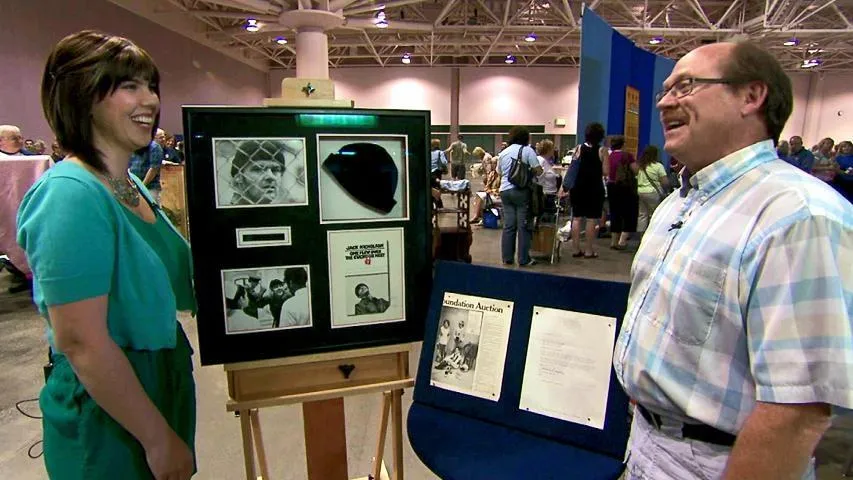GUEST: It's been in my family since the late 1800s. It originated with our grandmother, Florence, who lived in Germany when she was quite young, from the age of maybe eight to 13. And it has been in her home for all of the years until her passing in 1963, I believe. And my partner, when he was ten, saw it in his grandmother's apartment and begged, saying, "Please, I want to take this." And so they allowed him to take that.
APPRAISER: Was that when they were dividing up her estate?
GUEST: That's correct.
APPRAISER: Now, you brought a copy of an old photograph showing it here. So where is this, exactly?
GUEST: This is in St. Paul, and I believe the photo is from 1913.
APPRAISER: Well, I love family objects that are documented in family photos.
GUEST: Yeah.
APPRAISER: So that's wonderful that you have a copy of this photo and you actually brought some others that show it from different views.
GUEST: Right.
APPRAISER: And so what I would suggest you do long term is you take these photographs, write down a written history, and attach it to the back of the piece. We would call this a Royal Vienna-style porcelain. There was a company called Royal Vienna.
GUEST: Alright.
APPRAISER: Which went out of business in the last part of the 19th century, but there were many, many factories who made things in the style of them and put spurious marks that are in the style of the Royal Vienna factory.
GUEST: Okay.
APPRAISER: The mark on the back of this is an underglaze blue shield, or a beehive, and then with a European-style "7" beneath that.
GUEST: I thought I saw that.
APPRAISER: What that tells us is that we don't know who made this, but that's not so much the point. There were many factories, mostly in Austria and Germany, which made porcelains in this style.
GUEST: All right.
APPRAISER: The value is based upon size, the condition, but most important is the quality and the decorative appeal. Now, the plus for this is we've got this fantastic, huge size. I mean, this is really big. This is all hand painted; it is not a decal or transfer of any kind.
GUEST: Okay.
APPRAISER: We've got this wonderful European scene with horses and dogs and men.
GUEST: Right.
APPRAISER: Now, one of your questions was, "Who painted this?"
GUEST: Right.
APPRAISER: And we don't know.
GUEST: Okay.
APPRAISER: It was a person who worked in a decorating factory, probably in Austria, and they would have employed a whole host of artists who specialized in painting on porcelain and painting things in this style.
GUEST: All right.
APPRAISER: The quality is very good, but not great.
GUEST: Okay.
APPRAISER: Perhaps on a scale of one to ten, it's maybe a seven or an eight. But one big thing that really helps the value of this is this magnificent frame. Now, this is an American frame.
GUEST: Really?
APPRAISER: Based upon the aesthetic style of it.
GUEST: Yeah.
APPRAISER: Especially these wonderful sprays of pears in the four corners. Probably dates around the 1890s, which is about when we would expect this plaque to have been made. So somewhere in that time period. And the frame definitely adds value to it. But the combined package I would guess, at auction, would sell for between $6,000 and $8,000.
GUEST: Nice.
APPRAISER: Because it is so decorative. Now, the frame by itself might sell in the $1,000 to $1,500 range.











